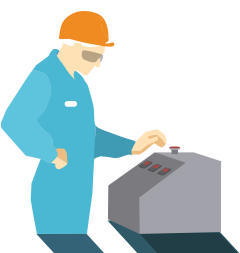Anthropometric Measurements
A workplace shall be adaptable for at least 90 % of the foreseeable population of users to fit for small females as well as for tall males (see Figure 1) in order to avoid forced body postures.
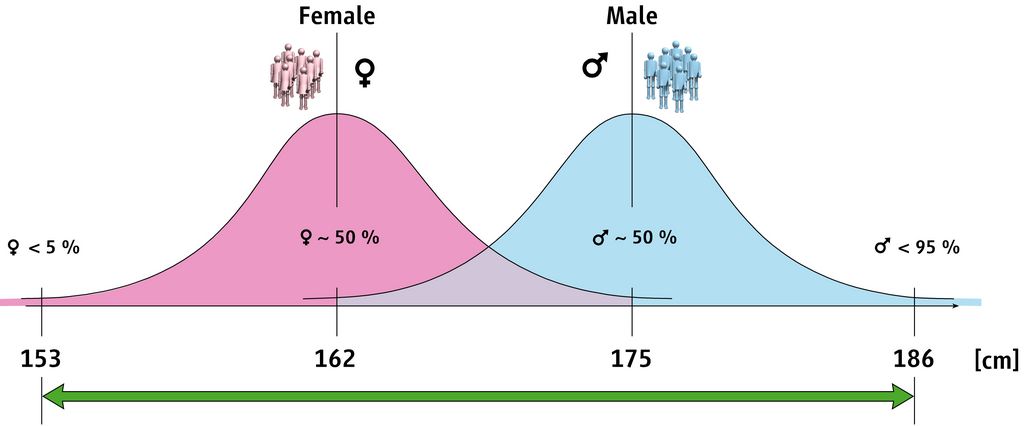
Figure 1: Chart of variation of the size of the working population in Europe (When used to calculate workplace heights, add 3 cm for wearing shoes.).
Anthropometric measurements indicate the variety of individual sizes of various parts of the body of the working population (see Figure 2). The measures for small women (5%) and tall men (95%) determine the required range of adaptability for workplaces and equipment.
Users differ not only in size. All users are individuals with specific characteristics such as male or female, left or right-handed, suffering from handicaps or chronic diseases.
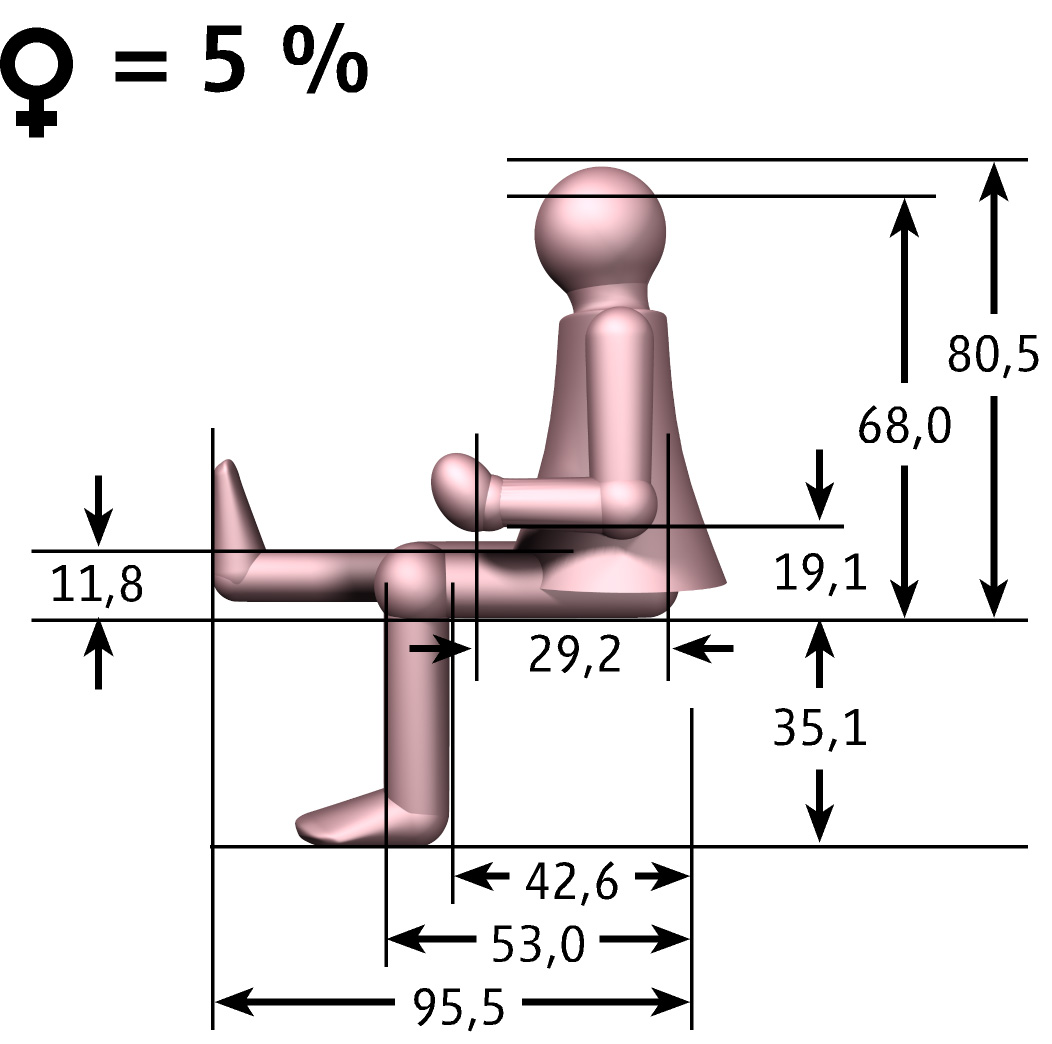
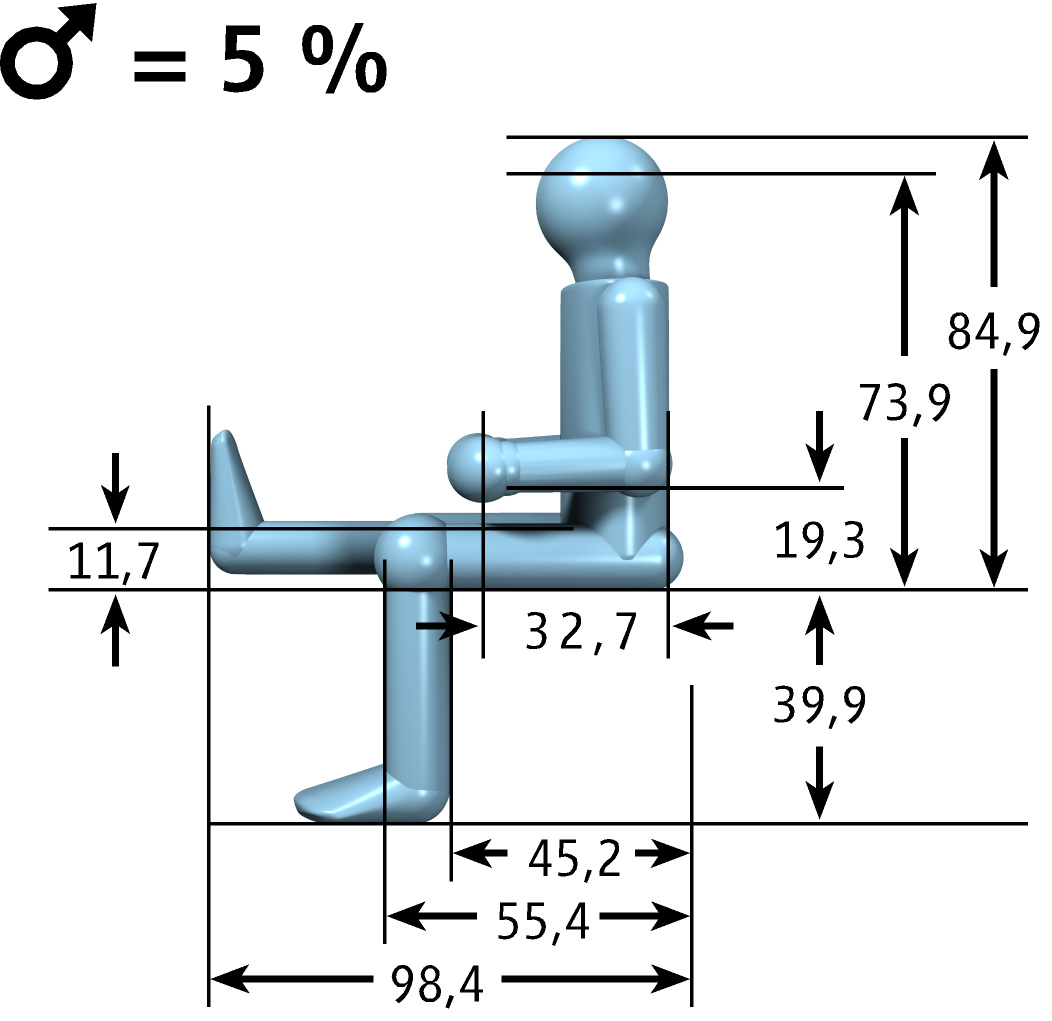
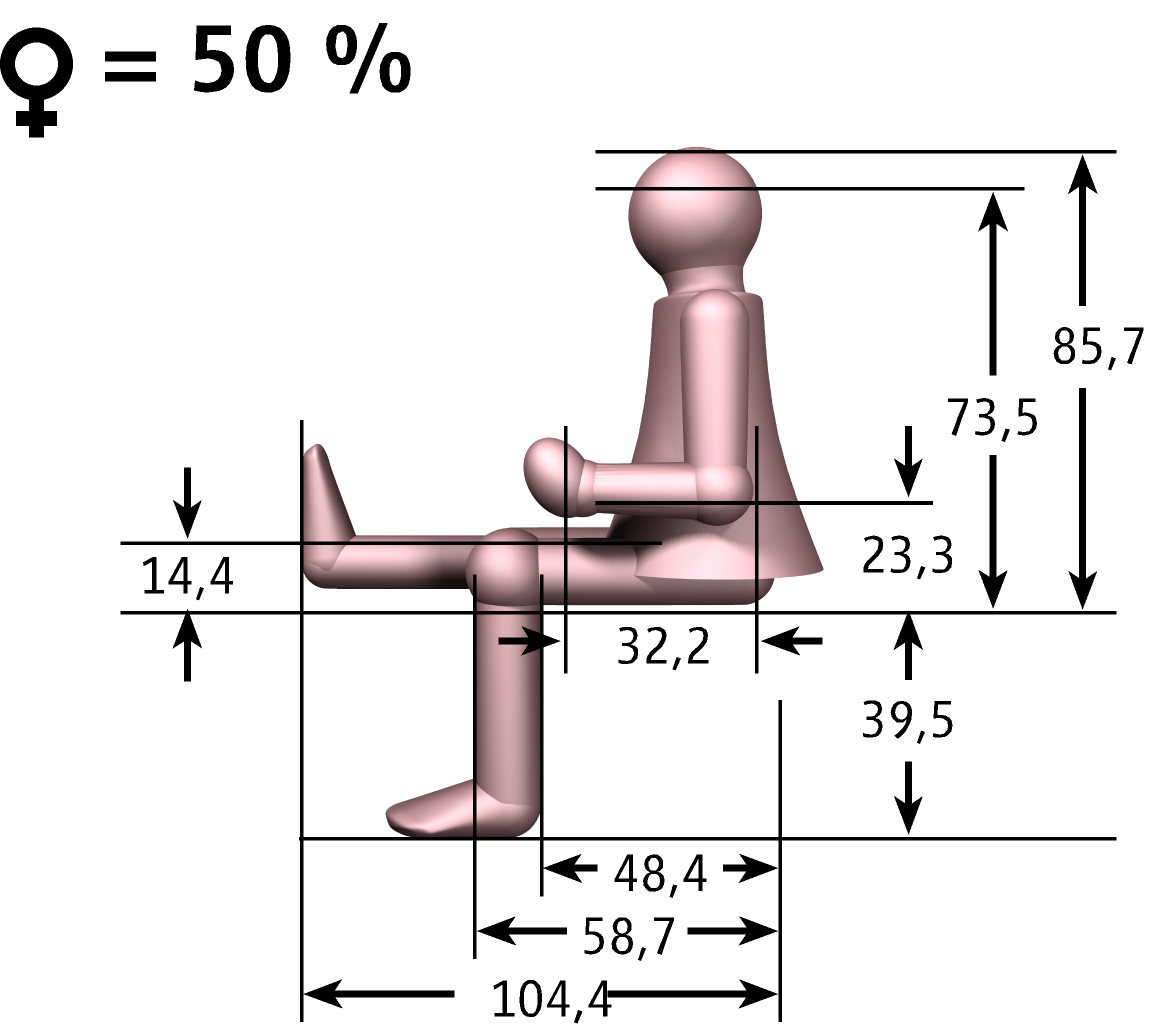
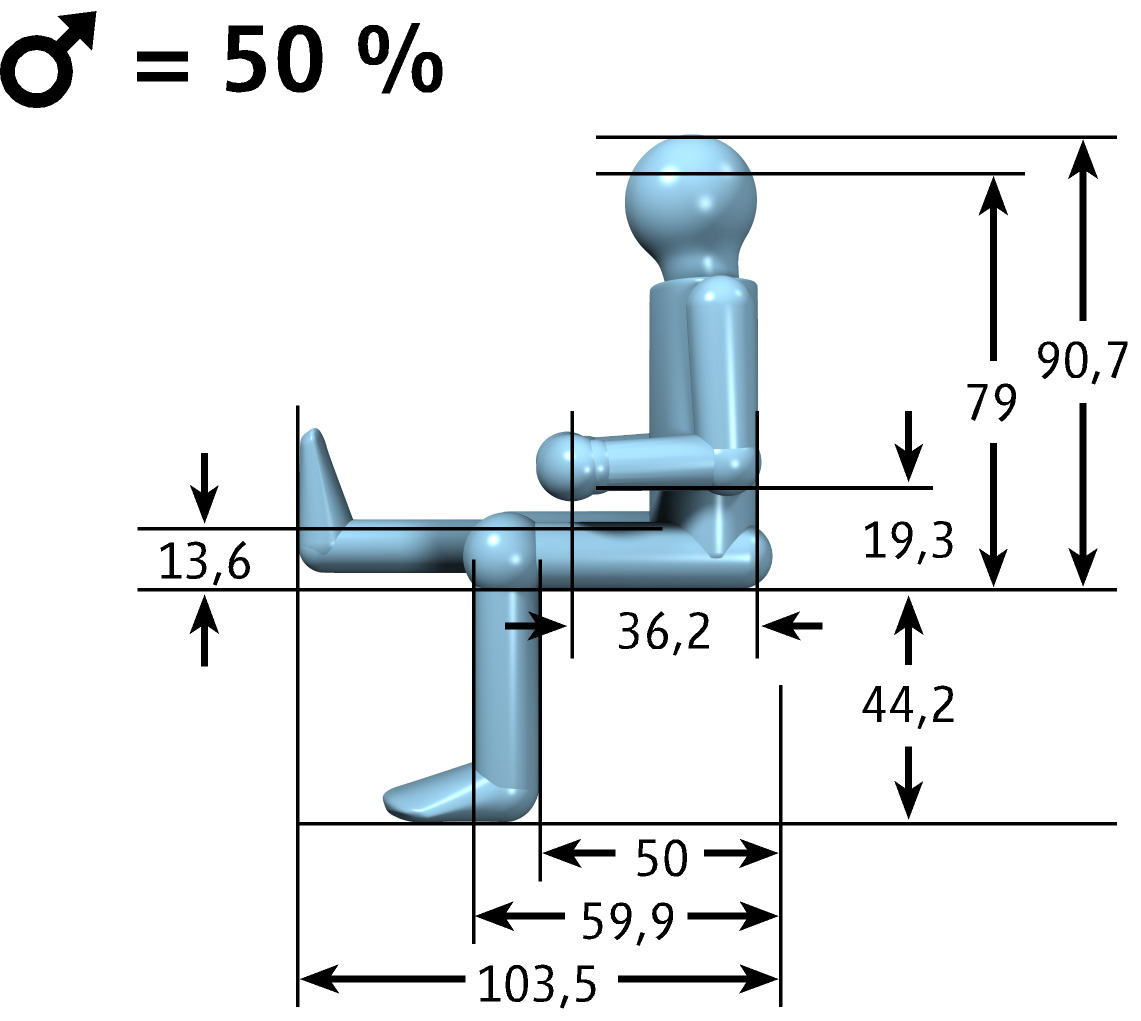
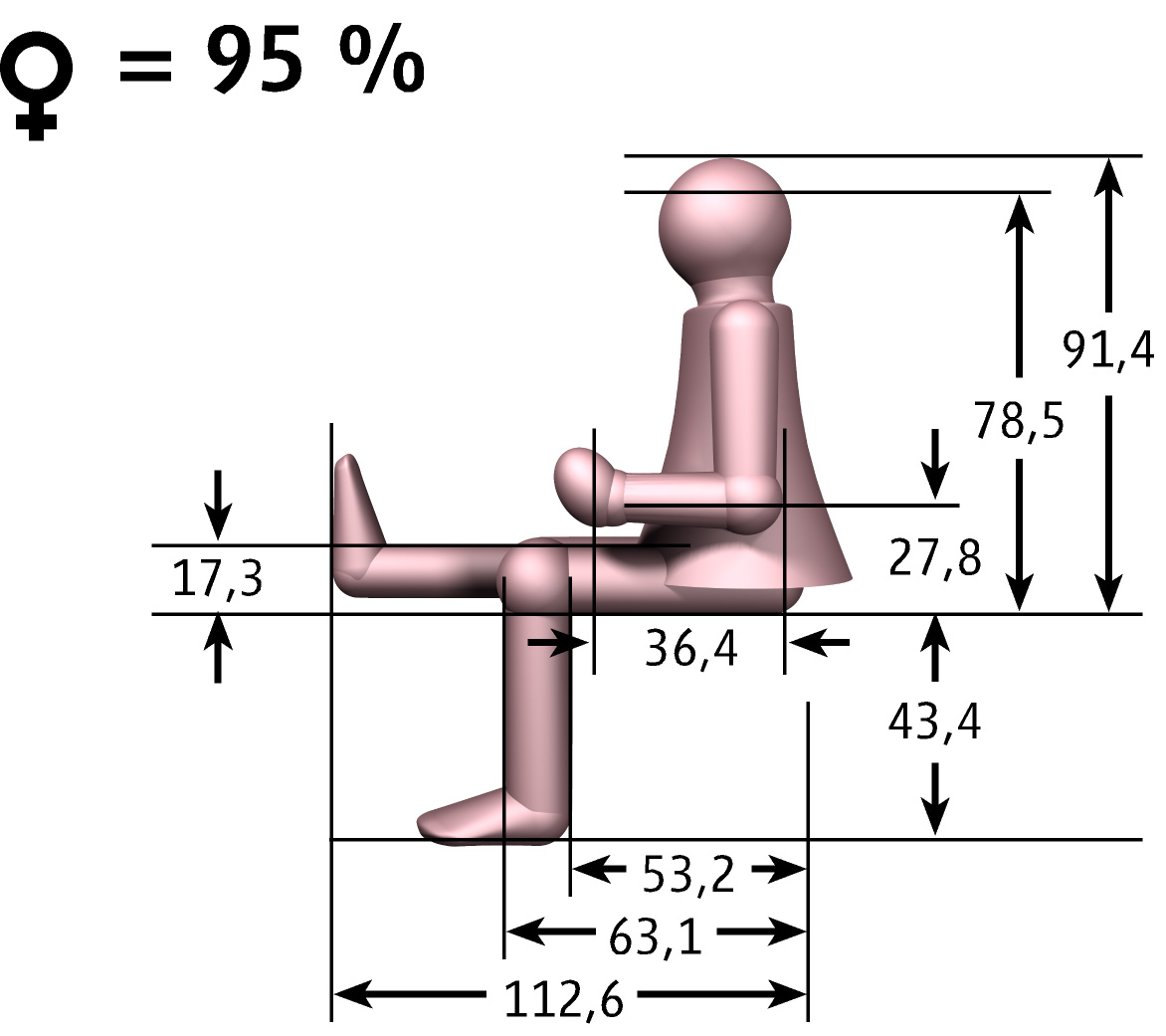
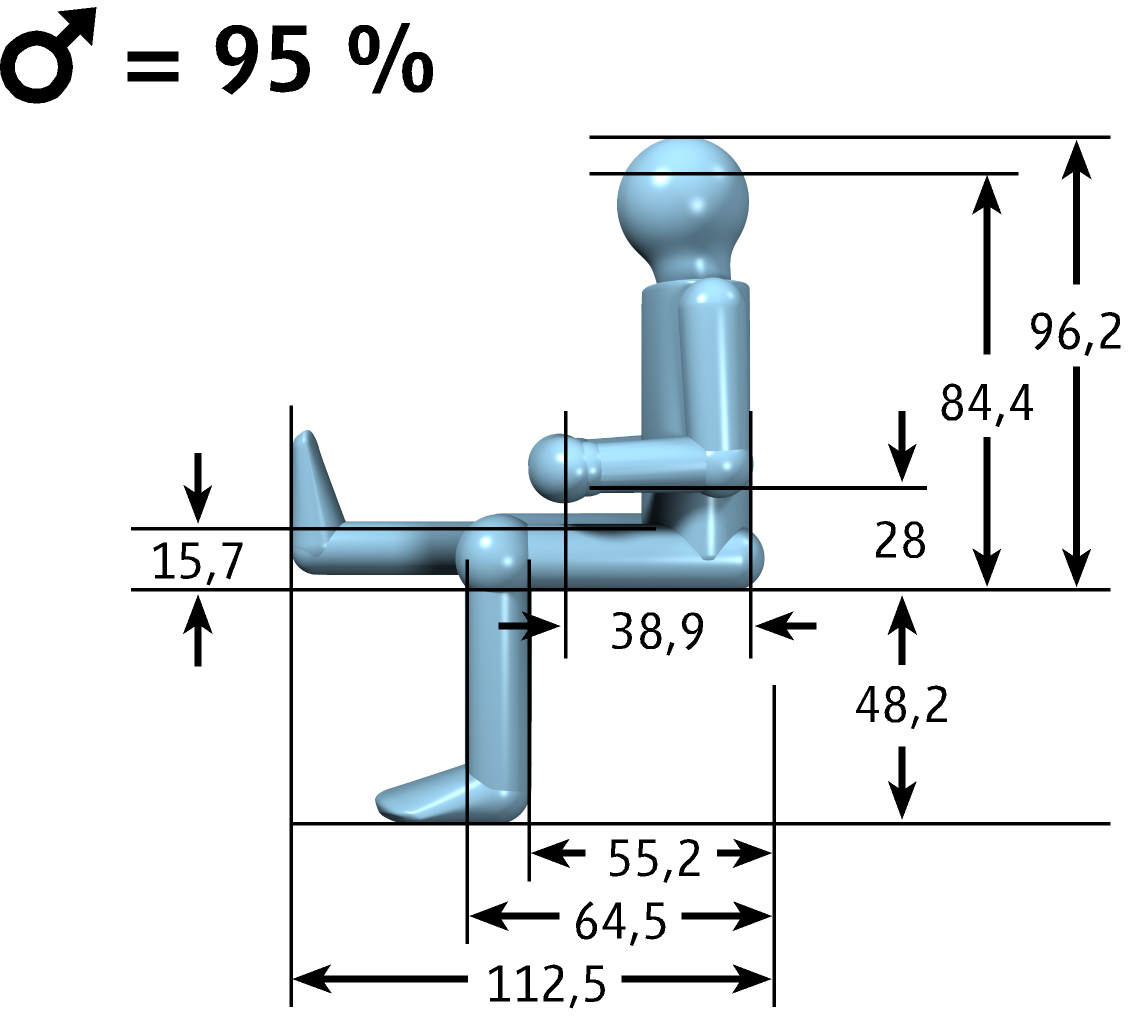
Figure 2: Anthropometric measures for small, average and tall female and male [Note: Measures may vary slightly depending on references.].
References:
- DIN 33402-2. Ergonomics - Human body dimensions - Part 2: Values
- EN 547-1. Human body measurements - Part 1: Principles for determining the dimensions required for openings for whole body access into machinery.
- EN 547-2. Human body measurements - Part 2: Principles for determining the dimensions required for access openings.
- EN ISO 14738. Safety of machinery - Anthropometric requirements for the design of workstations for industries and services.
- ISO 7250-3. Basic human body measurements for technological design - Part 3 : worldwide and regional design ranges for use in product standards.
- ISO/TR 7250-2. Basic human body measurements for technological design - Part 2: Statistical summaries of body measurements from national populations.

